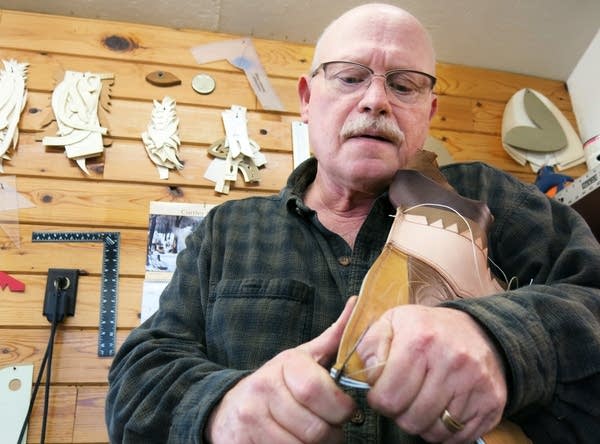Crafting handmade cowboy boots the old way in northern Minnesota

Buster's Boot Company owner Craig Bartels trims a boot seam with a sharp knife. It's a delicate task. If he cuts the stitching, he'll have to start the whole process over.
John Enger | MPR News
Go Deeper.
Create an account or log in to save stories.
Like this?
Thanks for liking this story! We have added it to a list of your favorite stories.


